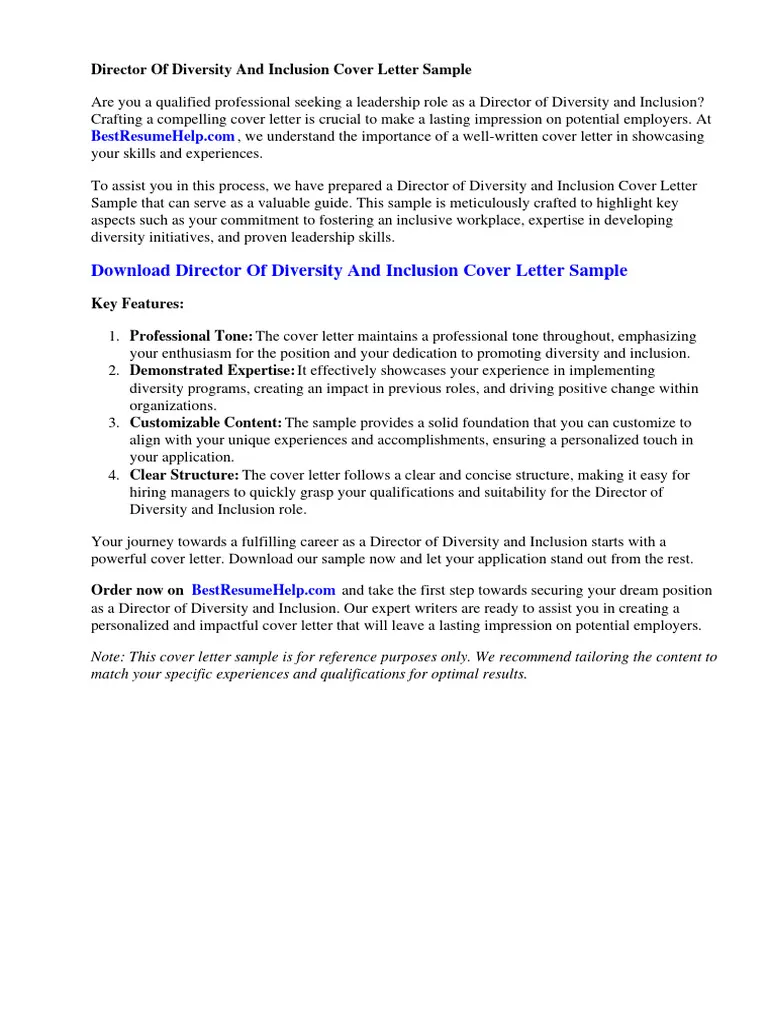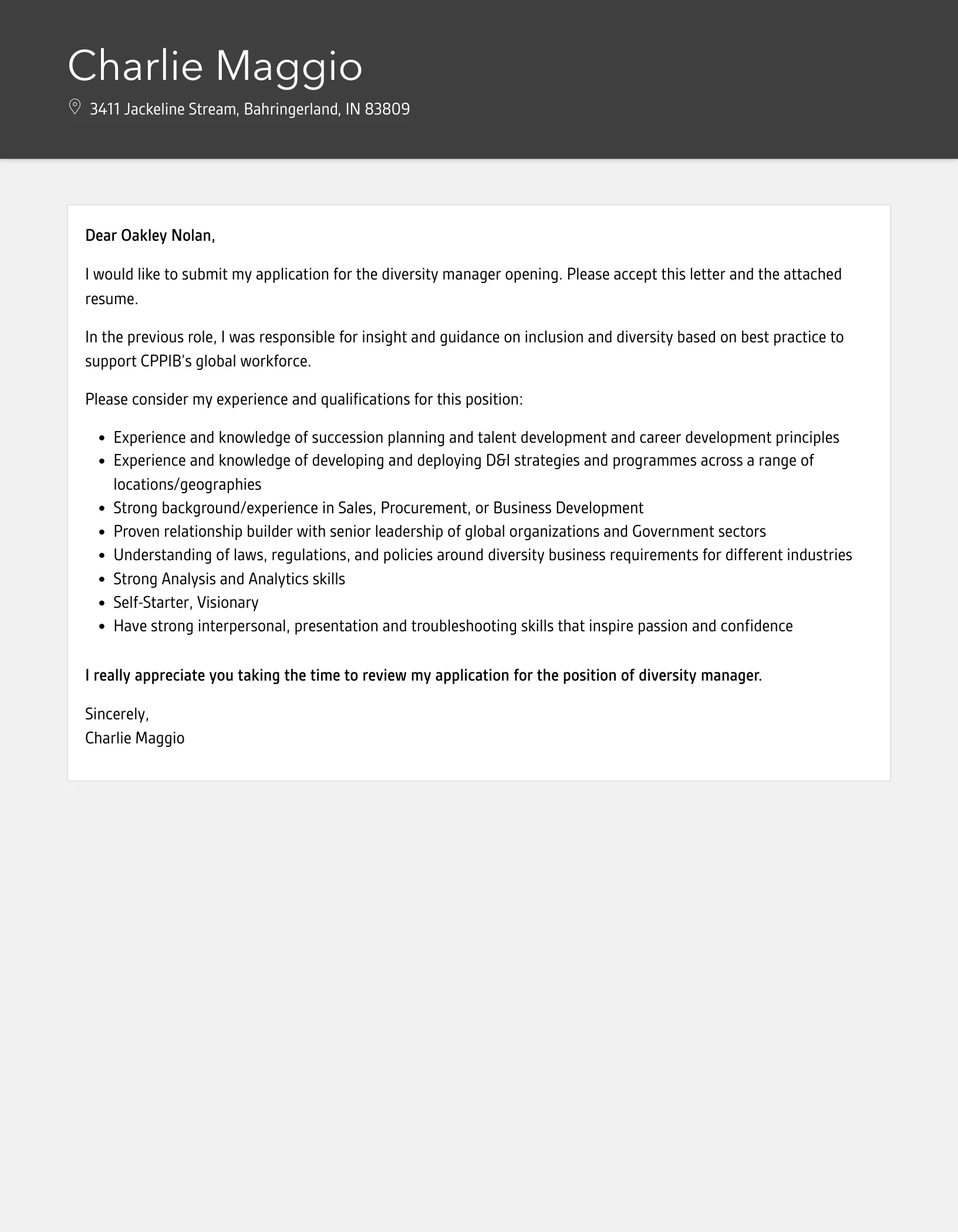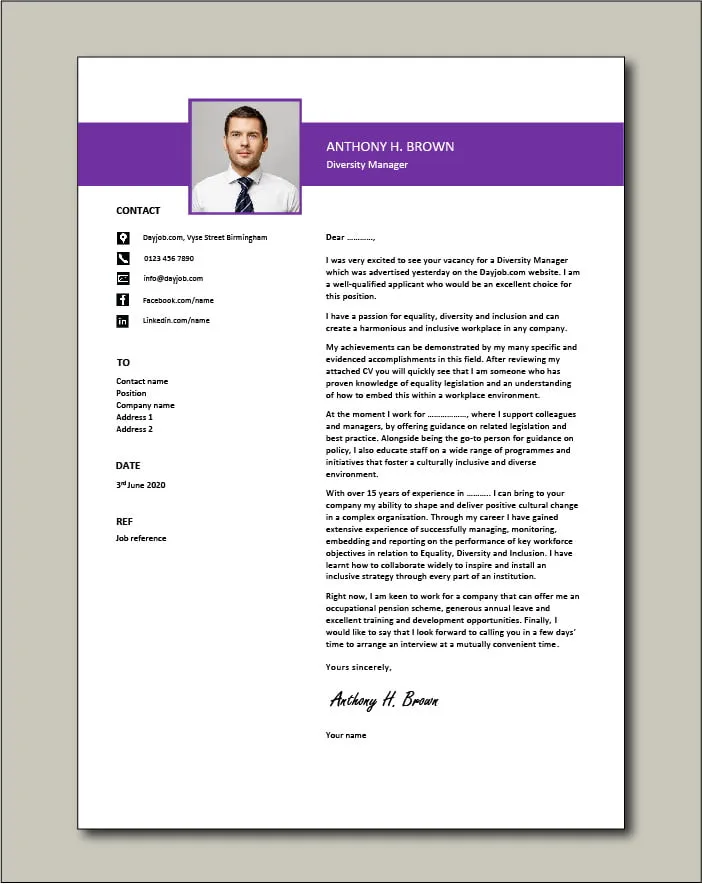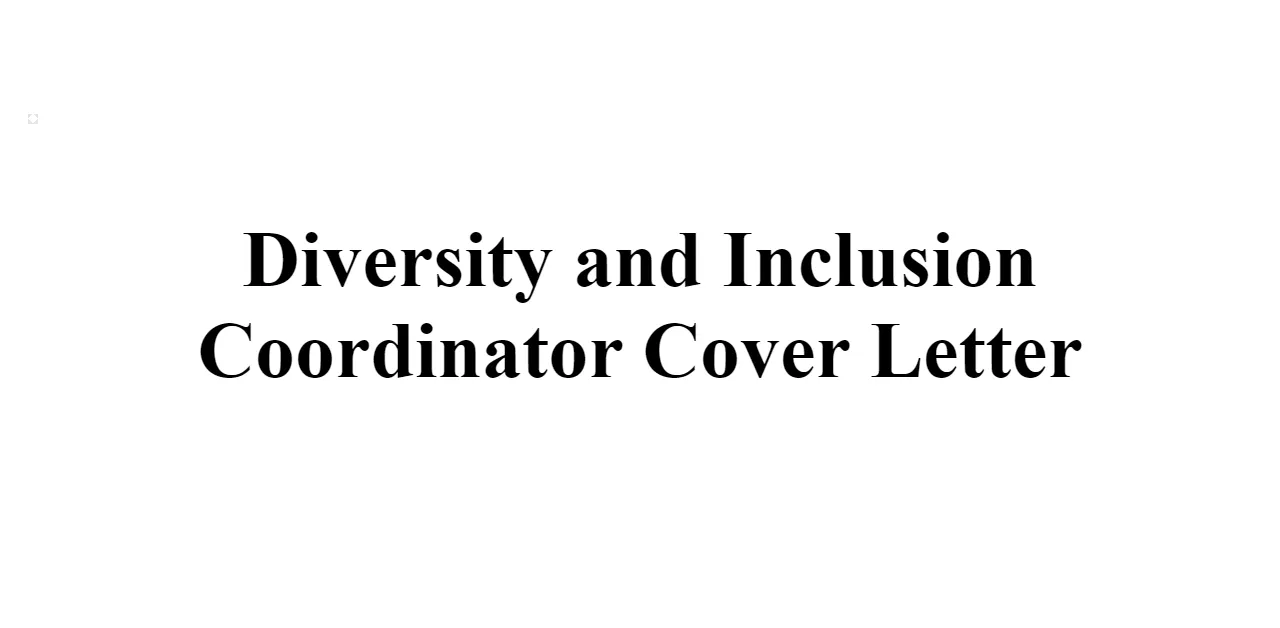What is a Diversity and Inclusion Cover Letter?
A diversity and inclusion cover letter is a specialized type of cover letter that goes beyond the standard format. It’s a powerful tool used by job seekers to communicate their commitment to promoting diversity, equity, and inclusion (DEI) within the workplace. Unlike a generic cover letter that focuses solely on skills and qualifications, a DEI cover letter emphasizes an applicant’s understanding of DEI principles, their past actions related to diversity, and how they plan to contribute to a more inclusive work environment if hired. This type of letter is particularly valuable for individuals applying to companies that prioritize DEI or those actively seeking to build more diverse and inclusive teams. It provides an opportunity to showcase a candidate’s genuine interest in these values and demonstrate how their personal experiences, skills, and perspectives can add value to the organization. It’s a way to signal to the hiring manager that the candidate is not just qualified for the job, but also aligned with the company’s culture and values, making them a potentially valuable asset in the pursuit of a more equitable workplace.
Why is a Diversity and Inclusion Cover Letter Important?
In today’s job market, a diversity and inclusion cover letter is more than just a formality; it’s a strategic advantage. It’s crucial for several compelling reasons. First, it allows you to differentiate yourself from other applicants who may not explicitly address their commitment to DEI. In a competitive landscape, highlighting your understanding and support of these values can set you apart and increase your chances of getting noticed. Second, it demonstrates that you’ve done your research and understand the company’s values. By aligning your cover letter with the organization’s DEI initiatives, you show that you’re a good cultural fit and genuinely interested in contributing to their mission. Third, it is an opportunity to showcase how your experiences and perspectives align with their DEI goals. This can include experiences with different cultures, initiatives you’ve led to promote diversity, or your understanding of intersectionality and how it can impact the workplace. Finally, in many industries, companies are actively seeking to build more diverse teams and promote an inclusive culture, and a DEI cover letter is your chance to present yourself as someone who can contribute to that important goal. This proactive approach can create a positive impression, making you a more attractive candidate to forward-thinking employers.
Key Components of a Compelling Diversity Cover Letter

A compelling diversity and inclusion cover letter goes beyond mere statements of support; it requires thoughtful content that showcases your understanding and commitment. Begin by clearly stating your understanding of DEI and why it matters to you. Then, provide specific examples of your actions that demonstrate your commitment. Did you participate in any diversity and inclusion initiatives at your previous job or volunteer for causes that promote equity and inclusion? Did you lead any teams or projects that addressed diversity-related topics? Discuss how you have worked to promote diversity in the past, and what results were achieved. Next, connect your experiences to the specific job you’re applying for and the company’s DEI goals. Show that you’ve researched the company and understand their values and initiatives. Explain how your skills and experiences align with their mission. Finally, conclude your letter by reiterating your commitment to DEI and expressing your enthusiasm for the opportunity to contribute to a more inclusive workplace. Express your desire to bring your unique perspective and experience to help drive their DEI efforts, and you will set yourself apart from other candidates.
Highlighting Your Commitment to Diversity and Inclusion
Demonstrating your commitment to diversity and inclusion requires more than simply stating your support. It requires action and clear examples. Start by reflecting on your past experiences. Consider any volunteer work, community involvement, or personal experiences that have shaped your understanding of diversity and inclusion. Think about instances where you actively promoted DEI, such as participating in or leading diversity initiatives, mentoring individuals from underrepresented groups, or advocating for inclusive policies. Next, incorporate these examples into your cover letter by providing concrete details. Instead of saying “I support diversity,” provide a specific example. For instance, if you were involved in organizing a cultural awareness event, describe your role, the event’s goals, and the impact it had. If you mentored someone from an underrepresented group, explain how you helped them succeed. Quantify your achievements whenever possible, such as the number of people involved or any measurable outcomes. Be authentic and genuine in your expression. Highlight your skills, your willingness to learn, and your commitment to creating a more inclusive environment in your future workplace.
Showcasing Relevant Experiences and Skills
In your diversity and inclusion cover letter, highlight your relevant experiences and skills. This includes any experience you have working with diverse teams, cross-cultural communication skills, or experience implementing DEI programs. Also, highlight skills such as empathy, active listening, and the ability to mediate conflict. If you have specific experience in a DEI role, be sure to emphasize your responsibilities and accomplishments. If you have participated in any diversity training or workshops, mention them and explain what you learned. If you have experience in any leadership positions, explain how you promoted an inclusive culture within your team. Be specific and provide examples whenever possible. This will help the hiring manager understand how your skills and experiences align with the organization’s values and goals. Be sure to clearly and concisely convey these skills and relate them to the job description to capture the hiring managers’ attention. Demonstrate how your skills and experiences can benefit the company.
Tailoring Your Letter to the Specific Job and Company

Personalizing your diversity and inclusion cover letter is vital for making a strong impression. Firstly, research the company’s mission, values, and any existing DEI initiatives. Identify specific programs or goals that resonate with you and align with your values. Mention these initiatives in your cover letter to show your genuine interest and understanding. Secondly, carefully analyze the job description to identify keywords and requirements related to diversity and inclusion. Use these keywords throughout your letter to demonstrate your understanding of the role and how your skills and experiences align with the company’s needs. Thirdly, customize the content of your letter to reflect your understanding of the company’s culture and its commitment to DEI. If the company promotes specific values, reflect those values in your writing. If the company states its commitment to specific initiatives, such as supporting employee resource groups or providing diversity training, mention your support of these activities. Personalizing your cover letter makes it more likely that you’ll land an interview and ultimately a job offer.
Formatting and Style Tips for Your Cover Letter
Proper formatting and writing style are just as important as the content of your diversity and inclusion cover letter. Begin with a professional and easily readable format. Use a clear and concise font, such as Arial or Times New Roman, and maintain consistent margins and spacing. Keep your letter to one page to ensure that the hiring manager can easily read your letter. Use a tone that is professional, yet authentic. Avoid jargon and overly technical language. Instead, write in a clear and straightforward manner. Focus on the main points and use concise sentences and paragraphs. Use strong action verbs to describe your accomplishments and experiences. Proofread your letter carefully for any errors in grammar or spelling. Errors will make a negative impression. Ensure that your letter is free of errors and reflects your attention to detail. Proofread the letter multiple times. It is also a good idea to have a friend or colleague review your letter for any potential issues.
Common Mistakes to Avoid
Several mistakes can undermine the effectiveness of your diversity and inclusion cover letter. Avoid making generic statements that lack specific examples or evidence. Hiring managers want to see tangible proof of your commitment to DEI. Refrain from simply repeating the company’s mission statement without demonstrating how you can contribute to it. Avoid using jargon or overly technical language. Focus on clear and straightforward communication. Don’t include irrelevant information or focus solely on your personal experiences without relating them to the job requirements. Avoid a negative tone or criticizing past employers or colleagues. Instead, focus on your positive contributions and commitment to DEI. Avoid clichés or overly used phrases. Finally, make sure that your cover letter is free of errors and is tailored to the specific job and company.
Resources and Further Reading

To improve your understanding of diversity, equity, and inclusion, consider these resources. Read articles and books about DEI. Many online resources provide insights into DEI principles, best practices, and current trends. Seek out and read these resources to learn more about topics such as unconscious bias, intersectionality, and inclusive leadership. Explore company websites and reports. Many companies publish information about their DEI initiatives. Read these reports to see how companies are approaching DEI. Research industry best practices. Several organizations offer training programs and certifications in DEI. Consider taking a course or workshop to improve your knowledge and skills. Network with professionals in the DEI field. Attend conferences, workshops, and webinars to connect with others who are passionate about DEI. Joining professional organizations like SHRM (Society for Human Resource Management) can also provide helpful resources and networking opportunities. By using these resources, you’ll gain knowledge and confidence in your ability to write a compelling diversity and inclusion cover letter.
